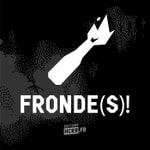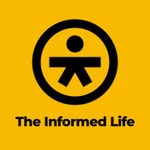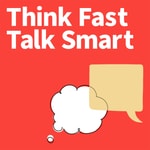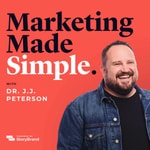Fire Science Show – Détails, épisodes et analyse
Détails du podcast
Informations techniques et générales issues du flux RSS du podcast.
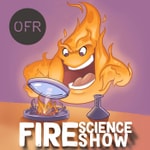
Fire Science Show
Wojciech Wegrzynski
Fréquence : 1 épisode/7j. Total Éps: 220

Classements récents
Dernières positions dans les classements Apple Podcasts et Spotify.
Apple Podcasts
🇨🇦 Canada - physics
31/07/2025#11🇬🇧 Grande Bretagne - physics
31/07/2025#11🇩🇪 Allemagne - physics
31/07/2025#37🇺🇸 États-Unis - physics
31/07/2025#48🇫🇷 France - physics
31/07/2025#63🇨🇦 Canada - physics
30/07/2025#10🇬🇧 Grande Bretagne - physics
30/07/2025#28🇩🇪 Allemagne - physics
30/07/2025#34🇺🇸 États-Unis - physics
30/07/2025#49🇫🇷 France - physics
30/07/2025#62
Spotify
Aucun classement récent disponible
Liens partagés entre épisodes et podcasts
Liens présents dans les descriptions d'épisodes et autres podcasts les utilisant également.
See allQualité et score du flux RSS
Évaluation technique de la qualité et de la structure du flux RSS.
See allScore global : 58%
Historique des publications
Répartition mensuelle des publications d'épisodes au fil des années.
166 - Bio-based insulation with Patrick Sudhoff
mercredi 28 août 2024 • Durée 49:03
In the everchanging world every now and then we get a new driver, that dictates most of our choices. In the current built environment and building industry, carbon dioxide feels like such a driver. We don't like it, we want to get rid of it... One way is to sequester or store large amounts of CO2 in our buildings. Ways to do that - more obvious is mass timber, but thats not the only thing. Let's talk bio-based insulation.
In this episode I've invited Patrick Sudhoff, now from DBI but the research was carried at University of Applied Sciences Magdeburg-Stendal. Patrick carried his PhD on the smouldering fires in bio-based insulation, and thus has built a good knowledge base around the topic. We discuss all the types of different bio-based insulations, what they are made of and where they are used. First we cover the drivers and need for the new material, as well as the benefits it brings to the table. We discuss the challanges with the onset of smouldering, transition to flaming and spread of fire through the structure.
List of projects that were related to the subject and discussed in the podcast:
- „More than just insulation additional benefits of insulation materials made from renewable raw materials “, 6 different research areas: fire protection, soundproofing, thermal insulation, sustainability analysis, moisture protection, emissions, 2016-2020, 12 institutes plus external partners
- “PyroProBiD – Development of a smoldering prognosis model for bio-based insulation materials”, 2020-2023 (my PhD project), Otto-von-Guericke University Magdeburg & University of Applied Sciences Magdeburg Stendal
- “HoBraTec – Optimization of firefighting procedures for multistorey timber buildings", 2022-2024, Fire Brigade Hamburg & University of Applied Sciences Magdeburg-Stendal & Institute of Fire and Disaster Protection Heyrothsberge
Some literature I got from Patrick:
- This poster gives you a brief summary of the latest challenges and solutions regarding the fire behavior of bio-based insulation - http://dx.doi.org/10.13140/RG.2.2.18735.14241
Further reading:
- Sudhoff, P. (2024): “Modeling the Fire Behavior of Bio-Based Insulation Materials”, Proceedings of the 4th International Symposium on Fire Safety of Facades 2024: 10-12 June 2024. Lund, Sweden, ISBN 978-91-89971-04-2
- Steen-Hansen, A., Fjellgaard M., Ehrlenspiel, R. (2023): “Smouldering fire test methods - Documenting the potential for smouldering fires in thermal insulation”, Report number: FRIC Report D3.1-2023.06, November 2023, http://dx.doi.org/10.13140/RG.2.2.21978.72640
- Steen-Hansen, A., Mikalsen, R.F. & Jensen, U.E (2018) Smouldering Combustion in Loose-Fill Wood Fibre Thermal Insulation: An Experimental Study. Fire Technol 54, 1585–1608. https://doi.org/10.1007/s10694-018-0757-4
----
The Fire Science Show is produced by the Fire Science Media in collaboration with OFR Consultants. Thank you to the podcast sponsor for their continuous support towards our mission.
165 - Best Practice vs. Appropriate Practice with Arnold Dix
mercredi 21 août 2024 • Durée 59:01
Is the "best practice" always the best approach to solving an engineering problem? Can we consider "best" and "appropriate" practices synonymous, and if not - how big is the gap between them? Join us as we welcome Professor Arnold Dix back to challenge conventional wisdom in engineering. Focusing on the nuanced distinction between "best practice" and "appropriate practice," we explore how context-sensitive solutions outperform complex and costly standards. Using real-world examples like tunnel ventilation systems, we illustrate the power of practicality, cost-effectiveness, and suitability in engineering, particularly in fire safety.
We also uncover the hidden economic motives that shape our engineering standards. From Stockholm’s innovative fire suppression mechanisms integrated into everyday systems to the critical role of regulatory bodies in enforcing effective safety measures, we highlight the benefits of familiar, reliable solutions over specialized ones. Personal anecdotes and international examples, including a farm story and regulations in Poland, bring these concepts to life, showing how everyday systems can enhance reliability and community awareness.
Finally, we explore how different nations approach tunnel construction and infrastructure preservation. Highlighting the challenges and successes of countries like Argentina, Chile, China, and Malaysia, we emphasise the importance of building local expertise and resilience. This episode invites you to reconsider how we define and implement standards across various fields by examining practical solutions in ventilation systems and the importance of context-sensitive engineering practices. Join us for a thought-provoking discussion on what constitutes best engineering practice and beyond.
----
The Fire Science Show is produced by the Fire Science Media in collaboration with OFR Consultants. Thank you to the podcast sponsor for their continuous support towards our mission.
156 - Trigger Boundaries with Harry Mitchell and Nick Kalogeropoulos
mercredi 19 juin 2024 • Durée 58:20
What if you could predict the last possible time to evacuate your community before a wildfire wreaks havoc? What if you had that knowledge years before the wildfires happened and built up your preparedness based on this knowledge? What if you knew how this boundary changes with wind, dry weather and direction? I think you get a knowledge-based decision model, and that is exactly what my guests today have been looking for.
Join us as we explore this cutting-edge approach with Imperial Hazelab Dr. Harry Mitchell and Nick Kalogeropoulos, who reveal the trigger boundary methodology developed within the WUI-NITY project. Their innovative work determines optimal evacuation timings by calculating an imaginary line where the time needed to evacuate aligns perfectly with the available time, thus ensuring safer exits. This episode promises to equip you with new insights into fire safety engineering that go beyond wildfires.
We take a sobering look at the dire consequences of delayed evacuations, spotlighting real-life tragedies like the 2018 Mati fire in Greece. Our discussion underscores the crucial importance of recognising imminent danger, addressing architectural hindrances, and improving inadequate road networks.
In the episode, we discuss the first iteration - the Population Evacuation Trigger Algorithm (PERIL), a tool designed to establish robust trigger boundaries for more effective and timely evacuations. This was later developed into a probabilistic tool, with a significantly higher capabilities.
In the episode, we discuss the complexities of wildfire evacuation modelling, discussing how transitioning from single scenario studies to probabilistic models offers a more nuanced understanding of various parameters such as wind and fuel moisture. Operational fire models like Farsight are pivotal in predicting fire spread and smoke, balancing detailed physical models with actionable results. We wrap up by emphasising the necessity of integrating community resilience, fuel conditioning, and improved planning to mitigate wildfire tragedies, highlighting the collaborative efforts that make these advancements possible.
Further reading for this episode includes:
- Integrating wildfire spread and evacuation times to design safe triggers: Application to two rural communities using PERIL model
- Design of stochastic trigger boundaries for rural communities evacuating from a wildfire
- The simulation of wildland-urban interface fire evacuation: The WUI-NITY platform
- WUI-NITY Reports
----
The Fire Science Show is produced by the Fire Science Media in collaboration with OFR Consultants. Thank you to the podcast sponsor for their continuous support towards our mission.
072 - Extracting the secret of IMFSE from Bart Merci and Eulalia Planas
Saison 1 · Épisode 73
mercredi 19 octobre 2022 • Durée 01:00:03
Many creators will not agree, but in some cases, copying is the highest form of admiration. And there are things in Fire Safety Engineering that are more than worthy of being copied. One of them is the famous International Masters in Fire Safety Engineering course, carried together by the Universities of Ghent, Edinburgh, Lund and a new member - Universitat Politècnica de Catalunya. And from what I've just learned from one of the masterminds - Prof. Bart Merci and Prof. Eulalia Planas- they do not mind that.
Of course, starting a second IMFSE is probably not feasible, but let us focus on WHY this particular programme is so successful. What makes this group of people so sought on the job market, and so competent when pursuing careers in academia? How is this programme so consistent, year after year, delivering world-class fire engineers? We try to isolate the little things that differentiate this programme from others in the world, so copying their success is a little easier. This episode is for anyone who is seeking an answer to the question, of what makes a great fire engineer.
If you are in a (lucky!) position to choose your MSc course, make sure to consider applying to IMFSE at www.imfse.be If I was making that decision today, I would not hesitate for a second!
----
The Fire Science Show is produced by the Fire Science Media in collaboration with OFR Consultants. Thank you to the podcast sponsor for their continuous support towards our mission.
071 - Risk as a tool for thinking with Ruben van Coile
mercredi 12 octobre 2022 • Durée 56:03
When thinking about 'risk' do you view it as a tool? I usually thought about it as a concept or maybe as a measure of 'how safe my building is?', but I have not really appreciated how beneficial it might be when used in such a way. Once you take it in its basic form - presentation of probabilities and consequences of fires in your buildings, you may use it to find answers to questions, that are a struggle to answer in another way. You can understand the performance of your building, its shortcomings and strengths.
I did not find this out on my own. It just had an amazing guest - prof. Ruben van Coile, outlined the risk concept for me, so I could discover it once again. And here, we both welcome you to join us in this discovery.
As you are done with this episode, I definitely recommend episode 45 where Ruben van Coile and Danny Hopkin discuss how risk can be used to determine the foundations of fire safety. If you liked this one, episode 45 is for you.
I will also shamelessly copy the list of resources provided the last time, as they are as relevant to this episode:
- D. Hopkin, R. Van Coile, and L. David, ‘Certain Uncertainty-Demonstrating safety in fire engineering design and the need for safety targets.’, SFPE Europe, 2017
- R. Van Coile, D. Hopkin, D. Lange, G. Jomaas, and L. Bisby, ‘The Need for Hierarchies of Acceptance Criteria for Probabilistic Risk Assessments in Fire Engineering’, Fire Technol, vol. 55, no. 4, pp. 1111–1146, Jul. 2019
- R. Van Coile, D. Hopkin, and D. Lange, Guest Editorial: Probabilistic Methods in Fire Safety Engineering. Springer US, 2019
- R. Van Coile, N. Elhami Khorasani, D. Lange, and D. Hopkin, ‘Uncertainty in Structural Fire Design’, in International Handbook of Structural Fire Engineering, K. LaMalva and D. Hopkin, Eds. Cham: Springer International Publishing, 2021, pp. 323–411
- D. Hopkin, I. Fu, and R. Van Coile, ‘Adequate fire safety for structural steel elements based upon life-time cost optimization’, Fire Safety Journal, p. 103095, May 2020
- R. Van Coile, G. Jomaas, and L. Bisby, ‘Defining ALARP for fire safety engineering design via the Life Quality Index’, Fire Safety Journal, vol. 107, pp. 1–14, Jul. 2019
- D. Hopkin, M. Spearpoint, and R. Van Coile, ‘The J-Value and Its Role in Evaluating Investments in Fire Safety Schemes’, Fire Technol, vol. 54, no. 6, pp. 1547–1564, Nov. 2018
Also, keep your eyes open for the next edition of SFPE Handbook where my guests are publishing a new chapter on "Economics and Decision Making in Fire Risk Analysis"
----
The Fire Science Show is produced by the Fire Science Media in collaboration with OFR Consultants. Thank you to the podcast sponsor for their continuous support towards our mission.
070 - Fire resistance is whatever you want it to be with Piotr Turkowski
Saison 1 · Épisode 70
mercredi 5 octobre 2022 • Durée 55:49
Today we talk fire resistance, but unlike you have ever heard. Join me and Dr Piotr Turkowski - two fire laboratory professionals in an honest discussion about their craft. The challenges in standardization and committee work, discoveries in laboratories that are very tough to implement in the test method design, and sometimes unscientific approaches which are necessary for a market consensus. All the challenges that make us view fire resistance in a different way than you may have.
Here are some resources for further learning:
- EGOLF webpage, and a direct link to EGOLF Round Robin studies
- A video of our lab, if you are curious on how the biggest furnaces we talked about look like
- The paper about the steel beam that Piotr has mentioned
- The paper about the shear response of deep precast/prestressed concrete hollow core slabs subjected to fire
- The paper about the intumescent reaction mechanisms
- The paper about modifying the insulation criterion
----
The Fire Science Show is produced by the Fire Science Media in collaboration with OFR Consultants. Thank you to the podcast sponsor for their continuous support towards our mission.
069 - Challenging fires at the wildland-urban interface (WUI) with Michael Gollner
mercredi 28 septembre 2022 • Durée 58:49
Why so many researchers are spending their time tackling fire issues at the Wildland Urban Interface (WUI)? What is so challenging about this? We always lived near nature, why today this emerges as one of the 'hottest' topics of fire science? As my today's guest Prof. Michael Gollner says - you need a very bad combination of weather and vegetation conditions to create a really bad fire. However, these conditions are occurring more and more often - in California they are not even considering fire seasons anymore, but wildfires become a threat all year round. I don't want to jump to unsupported conclusions, but damn, the prominence of wildfires seems to be the consequence of climate change that we will see soonest, and will hurt us a lot.
In this episode, we take fire engineers into the world of WUI. We try to narrow down WHY fires coming from the outside are so dangerous and so different from threats we know. We discuss the paradigms of fire safety engineering and WUI preparedness, including defendable zones, threats from firebrands and the effects of wildfire smoke on the occupants.
Finally, Michael shares with me his own experience with evacuating from a wildfire - a disturbing and interesting perspective of a fire scientist experiencing this first-hand.
Please take a look at these wildfire and WUI resources:
- Michaels Fire Lab group webpage (with an endless amount of useful stuff in it)
- IBHS Wildfire Preparedness Guidance
- NFPA Wildfire Division
----
The Fire Science Show is produced by the Fire Science Media in collaboration with OFR Consultants. Thank you to the podcast sponsor for their continuous support towards our mission.
068 - Human walking speed and factors that influence it with John Gales
mercredi 21 septembre 2022 • Durée 58:30
What factors influence the walking speed of an occupant? Is it just their physiology and crowd density? It seems it is more complicated than that (as most things are in fire science...). Dr John Gales of York University takes me on a journey through their extremally interesting research on anthropomorphic data and movement speeds, which they have been extensively carrying through the last years. You will learn why the crowd at a football match will have a different characteristic than one attending American football (handegg?). Why evacuation is quicker in torrential rain than in fire, and how stimuli may drive the walking speeds as well. And how a beer tent helped uncover that!
John has mentioned a lot of resources that may be of interest.
The online course mentioned by John is available at: https://uwaterloo.ca/fire-research-and-safety/fire-safety-program and a course outline may be found here.
Learn more about the York Fire Engineering group at https://yorkufire.com/
The SFPE Foundation report cited in the episode can be found here.
A list of relevant papers is available below:
- Chin, K., Young, T., Chorlton, B., Aucoin, D., and Gales, J., (2022) Crowd Behaviour in Canadian Football Stadia - Part 1 - Data Collection. Canadian Journal of Civil Engineering (Canadian Science Publishing). 49 (7)
- Chin, K., Young, T., Chorlton, B., Aucoin, D., and Gales, J., (2022) Crowd Behaviour in Canadian Football Stadia - Part 2 - Modelling Canadian Journal of Civil Engineering (Canadian Science Publishing). 49 (7)
- Yerushalami, A., Folk, L., Carton, H., Gales, J., Khan A., Weckman, B. (2022) Fire Evacuation Modelling of a Canadian Wildland Urban Interface Community. Canadian Journal of Civil Engineering (Canadian Science Publishing). 49 (1)
- Arce, S., Jeanneret, C., Gales, J, Antonellis, D., and Vaiciulyte, S. (2021) Human Behaviour in Informal Settlement Fires in Costa Rica. Safety Science (Elsevier). 142. 105384.
- Young, T., Gales, J, Kinsey M, and Wong W. (2021) Variability in Stadia Evacuation under Normal, High-Motivation, and Emergency Egress. Journal of Building Engineering (Elsevier). 40
- Folk, L., Gonzales, K., Gales, J., Kinsey, M, and Carratin, E. and Young, T. (2020) Emergency Egress for the Elderly in Care Home Fire Situations. Fire and Materials (John Wiley). 44(4): 595- 606.
----
The Fire Science Show is produced by the Fire Science Media in collaboration with OFR Consultants. Thank you to the podcast sponsor for their continuous support towards our mission.
067 - Next-gen smoke control experimental facility and a digital twin with Grzegorz Krajewski
mercredi 14 septembre 2022 • Durée 35:27
We've felt a bit awkward about how FSE handles smoke control in corridors. If you look closely into common practices, they rarely do include impressive engineering - more often you see some 'tips and tricks' that make the CFD simulations work out and systems are accepted. Doors opening/closing in specific timeline points, heat source sizes or soot generation parameters... I agree it does not necessarily mean that all the systems are designed wrongfully, or they do not provide safety... but in fact - how can we tell what they provide if we are not evaluating them in a clear and robust way?
In this episode, I talk to my colleague from the ITB - Dr Grzegorz Krajewski, about a next-generation smoke control experimental facility that has just been built at the ITB. From this talk, you will learn what doubts we have about the modern approach to designing smoke control in corridors, how we want to study it with our new facility and how you can take part in defining a new 'point zero' for the future of the smoke control.
If you like what you hear, and you would like us to conduct a specific experiment in the new facility, please reach us! We will do everything we can to run it.
----
The Fire Science Show is produced by the Fire Science Media in collaboration with OFR Consultants. Thank you to the podcast sponsor for their continuous support towards our mission.
066 - Fire Safe Use of Wood in Buildings with Andy Buchanan
mercredi 7 septembre 2022 • Durée 57:53
I wonder if we will be ever able to say: we know exactly how to build fire-safe buildings with mass timber. However that day may never come, each day of research brings us a little bit closer to achieving this goal. And some days - like the one in which Andy Buchanan and Birgit Östman published their open access handbook on fire-safe use timber, we definitely leap towards success!
In today's episode, I'm interviewing prof. Andy Buchanan on his thoughts on fire-safe use of timber, in relation to the handbook published recently (Book website). We discuss why some buildings bring more challenges than others, and how different the mass timber compartment fire can be from a contemporary noncombustible structure. What do we know about the behaviour of timber, how engineers can predict that behaviour and how that knowledge is put into practice? This episode is not about the book, it is about a mindset of how to safely approach the challenges lying ahead.
Oh, and about that book I've mentioned... The best part - the Authors and sponsors have paid for it and it is accessible online. No tricks. You can download the pdf right here. Enjoy!
----
The Fire Science Show is produced by the Fire Science Media in collaboration with OFR Consultants. Thank you to the podcast sponsor for their continuous support towards our mission.
